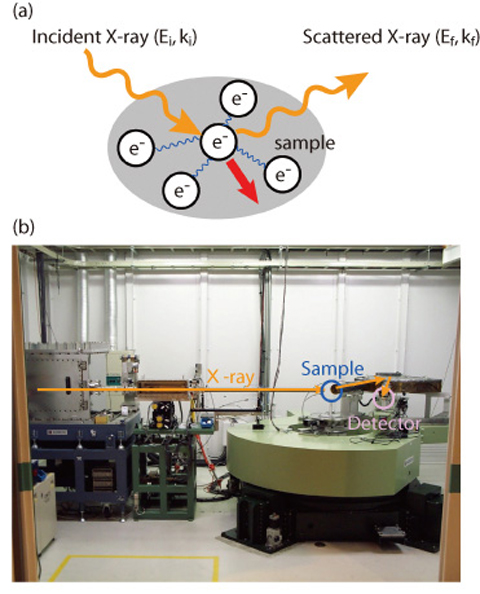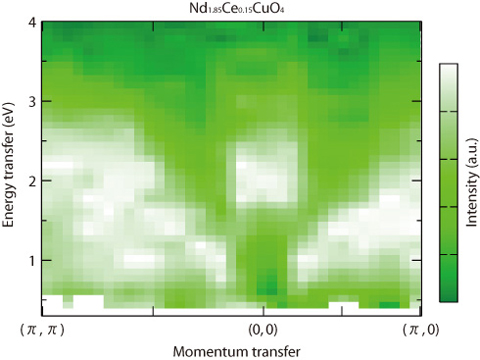
Fig.4-20

Fig.4-21 Resonant inelastic X-ray scattering spectra of Nd1.85 Ce0.15 CuO4
One of the important tasks of materials science is to understand electronic properties of a material from the observation of its electronic structure, namely energy and momentum of the electrons. Resonant Inelastic X-ray scattering (RIXS) which has been developed recently utilizing brilliant synchrotron radiation X-rays enables us to measure momentum and energy of the electron simultaneously, which was impossible by conventional photon scattering and absorption methods. Fig.4-20(a) shows a schematic diagram of inelastic X-ray scattering. Energy transfer (Ei-Ef) and momentum transfer (ki-kf) during the scattering process reflects the character of the electron. We have installed a specially designed spectrometer for inelastic X-ray scattering at the JAEA beam line of "SPring-8" and have used it to measure electronic excitation spectra.
A target of our research is strongly correlated electron systems exhibiting phenomena such as superconductivity with high transition temperature and colossal magnetoresistance. Electrons in the system interact with each other by strong Coulomb repulsion which exceeds their kinetic energy. Investigation of the electronic structure of these systems is a starting point for the understanding of their properties and it is an important subject in recent condensed matter physics.
Fig.4-21 shows RIXS spectra of the superconducting cuprate Nd1.85Ce0.15CuO4. The 2-eV feature at momentum (0,0) is an excitation across the energy gap due to the strong Coulomb repulsion. On the other hand, shifts to higher energy with momentum transfer from (0,0) to (π,0) and (π,π) originate from the mobile electrons in the material. The latter excitation is closely related to the electronic properties and we found that its character agreed with theoretically calculated dynamical charge correlation function relating the energy and momentum between two electrons in the material. Though dynamical charge correlation function is an important and fundamental physical quantity, we have had no experimental method to measure it until now. Our result demonstrates that RIXS can be a tool to measure it and this is the first observation of the dynamical charge correlation function of strongly correlated electrons.